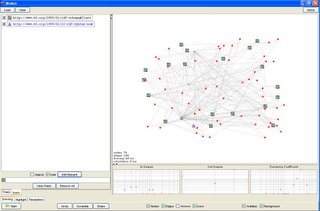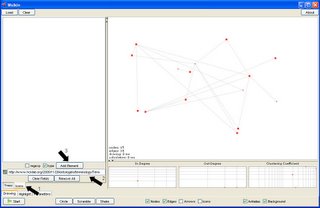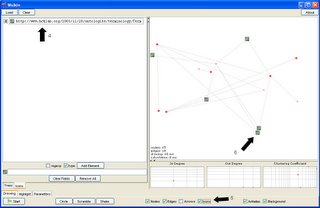Recently I have been to Estonia for a short vacation [1][2]. It is a country of about 1.356.000 citizens located in the north of Europe on the Baltic sea. Well the interesting thing is that Milan (Italy) itself has more inhabitants than whole Estonia and if you look at Orkut community Estonian users are about 0,44% of the total.
It has been written about "Orkut Brazilian invasion" [3], and about Estonia numbers in the same article "orkut has turned most popular in little Eastern-European country Estonia where a little more than 3% (June 2005) of the population are registered orkut users. Brazil holds the second place (about 2.5% of the population in the south east of the country)"
Estonian users are quite the same of Portugal (0.45%) users... but Portugal (more than 10.000.000 inhabitants) is about 8 times Estonia in terms of citizens. And what about Canada? Canada has about 30.000.000 citizens and in orkut it is around 0.53%.
Orkut users from Estonia are usually between the age of 17 and 23... thus, given the whole population [4] we have about 140.000 units in that range. A good part of them is in orkut... interesting...
[1] Fotoalbum
[2] Blog of my trips
[3] Wikipedia
[4] Population distribution in Estonia
Tuesday, December 13, 2005
Saturday, December 03, 2005
Welkin more stylish? [3]
This is the second developement step for adding in welkin icons to resources of a particular rdf type and to resources with the URI starting with a particular substring (you can download it from svn of the Simile Project).
It is possible to associate an icon to all the resources with the URI starting with a particular substring:
1) Click on the "icons" tab on the left of the welkin interface
2) Type the substring
3) Check the "regexp" checkbox
4) Click on the "Add Element" button

The substring of the new element will be displayed in blue (the "type" element will be in black).

The final result:

It is possible to associate an icon to all the resources with the URI starting with a particular substring:
1) Click on the "icons" tab on the left of the welkin interface
2) Type the substring
3) Check the "regexp" checkbox
4) Click on the "Add Element" button

The substring of the new element will be displayed in blue (the "type" element will be in black).

The final result:

Sunday, November 27, 2005
Welkin more stylish? [2]
This is the first developement step for adding in welkin icons to resources of a particular rdf type
(you can find it on svn of the Simile Project)
It is possible to change the icon to be displayed by clicking on the icon image. It is suggested to upload only icons of 16x16 pixels (14x14 maximum) to not have overlapping in the chart.

Clicking on the "trash" icon it is possible to delete one of the defined icon element.

Double clicking on the uri it is possible to modify an already defined icon element.

(you can find it on svn of the Simile Project)
It is possible to change the icon to be displayed by clicking on the icon image. It is suggested to upload only icons of 16x16 pixels (14x14 maximum) to not have overlapping in the chart.

Clicking on the "trash" icon it is possible to delete one of the defined icon element.

Double clicking on the uri it is possible to modify an already defined icon element.

Welkin more stylish? [1]
This is the first developement step for adding in welkin icons to resources of a particular rdf type
(you can find it on svn of the Simile Project)
When a model as been loaded it is possible to associate an icon to all the resources of the specified rdf type:
1) Click on the "icons" tab on the left of the welkin interface
2) Type the URI of the desired type to associate to the icon on the left
3) Click on the "Add Element" button

After performing the above steps the new icon element will be displayed on the panel on the top left (4). Enabling the icons drawing (5), the resources that are of the specified type will be displayed with the selected icon (6).

(you can find it on svn of the Simile Project)
When a model as been loaded it is possible to associate an icon to all the resources of the specified rdf type:
1) Click on the "icons" tab on the left of the welkin interface
2) Type the URI of the desired type to associate to the icon on the left
3) Click on the "Add Element" button

After performing the above steps the new icon element will be displayed on the panel on the top left (4). Enabling the icons drawing (5), the resources that are of the specified type will be displayed with the selected icon (6).

Saturday, November 12, 2005
Linotype going to be "semantic"
Linotype software was written by Stefano Mazzocchi for his own blog [1]. It is implemented as a Cocoon application and the original software is available at [2].
Working on the same software Stefano and I started to introduce semantic annotation of the content through rdf/a [3].
At the location [4] it is available a branch in which an initial integration
of rdf/a is under developement.
[1] http://www.betaversion.org/~stefano/linotype/
[2] http://simile.mit.edu/repository/linotype/trunk/
[3] http://www.w3.org/2001/sw/BestPractices/HTML/2005-rdfa-spec
[4] http://simile.mit.edu/repository/linotype/branches/rdf-a/
Working on the same software Stefano and I started to introduce semantic annotation of the content through rdf/a [3].
At the location [4] it is available a branch in which an initial integration
of rdf/a is under developement.
[1] http://www.betaversion.org/~stefano/linotype/
[2] http://simile.mit.edu/repository/linotype/trunk/
[3] http://www.w3.org/2001/sw/BestPractices/HTML/2005-rdfa-spec
[4] http://simile.mit.edu/repository/linotype/branches/rdf-a/
Friday, November 04, 2005
Piggy Bank and Solvent... Welcome Semantic Web!
Three years ago I started my trip through languages and technologies for ontologies definition and usage. I read several papers on this topic and after a certain period I felt quite sad in realizing the high price to pay to obtain a benefit from "semantic add ons".
The idea was to define a sort of perfect micro-world where everything has a well defined meaning. And obviously, after a certain period I gave up. At that time Jena was something really complex to understand to me and Sesame was only a "magic" word. I took a look at the powerful and, in the same time, cryptic KIF formalism, at DAML and DAML+OIL. For some reasons (besically one :D... the serialization in XML was driving me crazy) RDF sounded too weird.
Then OWL came out and I started reading again... n3... Rio... Sesame. The "Semantic Web" concept was still something not well defined and my impression was that OWL was "a light version" of the old-style ontology languages coming from the AI world...
I was wrong, look at the Simile Project... with Piggy Bank and Solvent ... the "semantic web" started to rock!
And now it is clear "Semantic Web" is everything you want it to be ;)
The idea was to define a sort of perfect micro-world where everything has a well defined meaning. And obviously, after a certain period I gave up. At that time Jena was something really complex to understand to me and Sesame was only a "magic" word. I took a look at the powerful and, in the same time, cryptic KIF formalism, at DAML and DAML+OIL. For some reasons (besically one :D... the serialization in XML was driving me crazy) RDF sounded too weird.
Then OWL came out and I started reading again... n3... Rio... Sesame. The "Semantic Web" concept was still something not well defined and my impression was that OWL was "a light version" of the old-style ontology languages coming from the AI world...
I was wrong, look at the Simile Project... with Piggy Bank and Solvent ... the "semantic web" started to rock!
And now it is clear "Semantic Web" is everything you want it to be ;)
Subscribe to:
Comments (Atom)